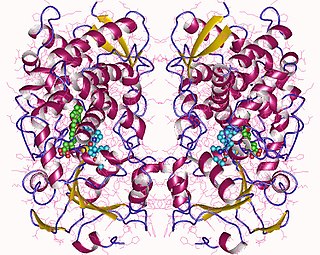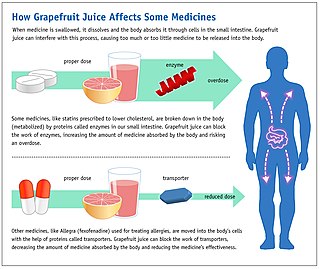Integrated discrete Multiple Organ Culture (IdMOC) is an in vitro, cell culture based experimental model for the study of intercellular communication. In conventional in vitro systems, each cell type is studied in isolation ignoring critical interactions between organs or cell types. IdMOC technology is based on the concept that multiple organs signal or communicate via the systemic circulation (i.e., blood).
Contents

The IdMOC plate consists of multiple inner wells within a large interconnecting chamber. Multiple cell types are first individually seeded in the inner wells and, when required, are flooded with an overlying medium to facilitate well-to-well communication. Test material can be added to the overlying medium and both media and cells can be analyzed individually. Plating of hepatocytes with other organ-specific cells allows evaluation of drug metabolism and organotoxicity. [1]

Drug metabolism is the metabolic breakdown of drugs by living organisms, usually through specialized enzymatic systems. More generally, xenobiotic metabolism is the set of metabolic pathways that modify the chemical structure of xenobiotics, which are compounds foreign to an organism's normal biochemistry, such as any drug or poison. These pathways are a form of biotransformation present in all major groups of organisms, and are considered to be of ancient origin. These reactions often act to detoxify poisonous compounds. The study of drug metabolism is called pharmacokinetics.
The IdMOC system has numerous applications in drug development, such as the evaluation of drug metabolism and toxicity. It can simultaneously evaluate the toxic potential of a drug on cells from multiple organs and evaluate drug stability, distribution, metabolite formation, and efficacy. By modeling multiple-organ interactions, IdMOC can examine the pharmacological effects of a drug and its metabolites on target and off-target organs as well as evaluate drug-drug interactions by measuring cytochrome P450 (CYP) induction or inhibition in hepatocytes.

Drug development is the process of bringing a new pharmaceutical drug to the market once a lead compound has been identified through the process of drug discovery. It includes preclinical research on microorganisms and animals, filing for regulatory status, such as via the United States Food and Drug Administration for an investigational new drug to initiate clinical trials on humans, and may include the step of obtaining regulatory approval with a new drug application to market the drug.

Toxicity is the degree to which a chemical substance or a particular mixture of substances can damage an organism. Toxicity can refer to the effect on a whole organism, such as an animal, bacterium, or plant, as well as the effect on a substructure of the organism, such as a cell (cytotoxicity) or an organ such as the liver (hepatotoxicity). By extension, the word may be metaphorically used to describe toxic effects on larger and more complex groups, such as the family unit or society at large. Sometimes the word is more or less synonymous with poisoning in everyday usage.

Pharmacology is the branch of biology concerned with the study of drug or medication action, where a drug can be broadly defined as any man-made, natural, or endogenous molecule which exerts a biochemical or physiological effect on the cell, tissue, organ, or organism. More specifically, it is the study of the interactions that occur between a living organism and chemicals that affect normal or abnormal biochemical function. If substances have medicinal properties, they are considered pharmaceuticals.
IdMOC can also be used for routine and high throughput screening of drugs with desirable ADME or ADME-Tox properties. In vitro toxicity screening using hepatocytes in conjunction with other primary cells such as cardiomyocytes (cardiotoxicity model), kidney proximal tubule epithelial cells (nephrotoxicity model), astrocytes (neurotoxicity model), endothelial cells (vascular toxicity model), and airway epithelial cells (pulmonary toxicity model) is invaluable to the drug design and discovery process. [2]
ADME is an abbreviation in pharmacokinetics and pharmacology for "absorption, distribution, metabolism, and excretion", and describes the disposition of a pharmaceutical compound within an organism. The four criteria all influence the drug levels and kinetics of drug exposure to the tissues and hence influence the performance and pharmacological activity of the compound as a drug. Sometimes, liberation and/or toxicity are also considered, yielding LADME, ADMET, or LADMET.
In vitro toxicity testing is the scientific analysis of the effects of toxic chemical substances on cultured bacteria or mammalian cells. In vitro testing methods are employed primarily to identify potentially hazardous chemicals and/or to confirm the lack of certain toxic properties in the early stages of the development of potentially useful new substances such as therapeutic drugs, agricultural chemicals and food additives.
Cardiotoxicity is the occurrence of heart electrophysiology dysfunction or muscle damage. The heart becomes weaker and is not as efficient in pumping and therefore circulating blood. Cardiotoxicity may be caused by chemotherapy treatment, complications from anorexia nervosa, adverse effects of heavy metals intake, or an incorrectly administered drug such as bupivacaine.
The IdMOC was patented by Dr. Albert P. Li in 2004. [3]
Albert P. Li is President and CEO of In Vitro ADMET Laboratories (IVAL), Columbia, MD and Malden, MA. For the past three decades, Li has devoted his scientific career to the advancement of scientific concepts and technologies to accurately predict human drug properties. His research is focused on the development and application of human-based in vitro experimental systems in drug discovery and development. He is a pioneer in the isolation, cryopreservation, and culturing of human hepatocytes and their application in the evaluation of drug metabolism, drug-drug interactions, and drug toxicity.








